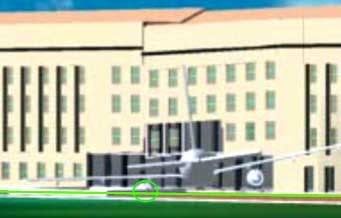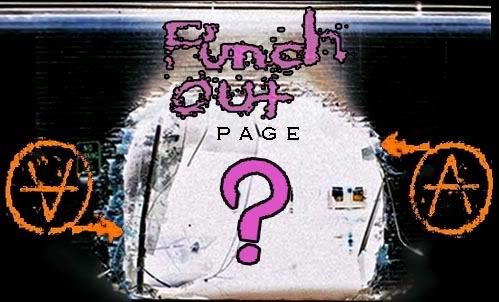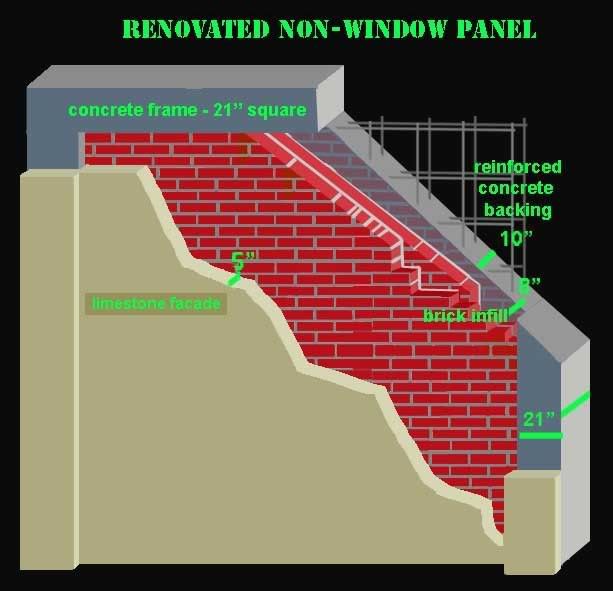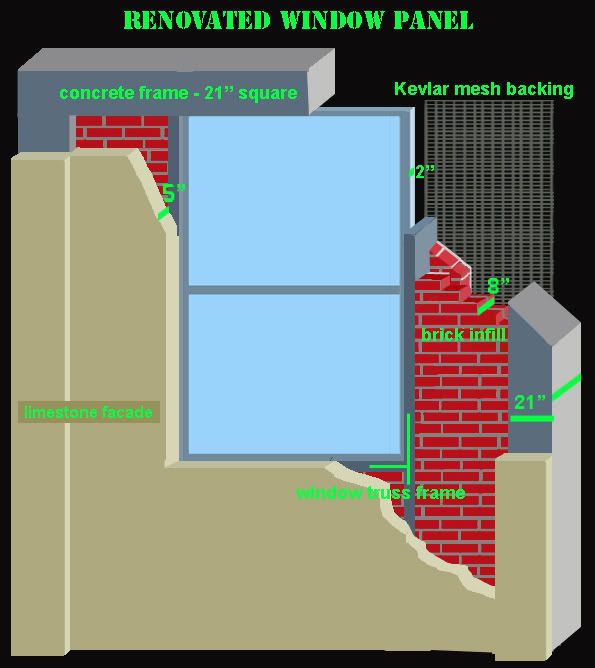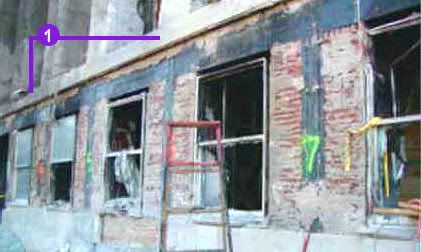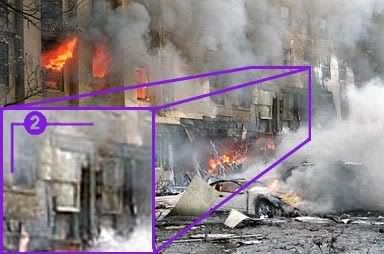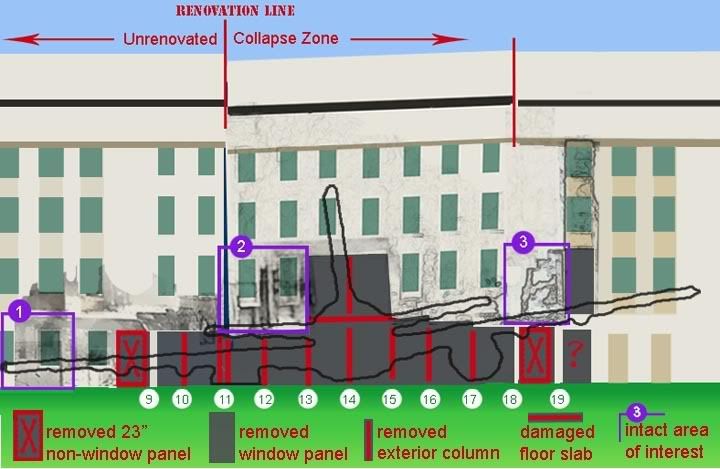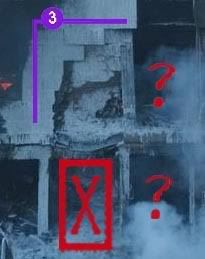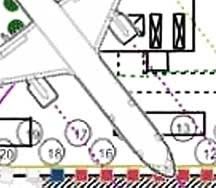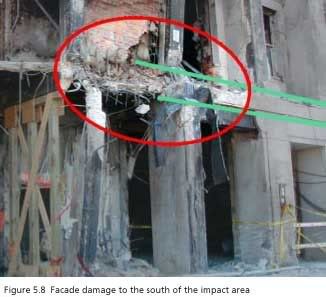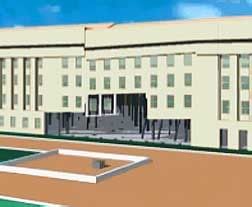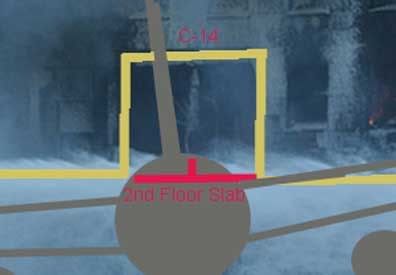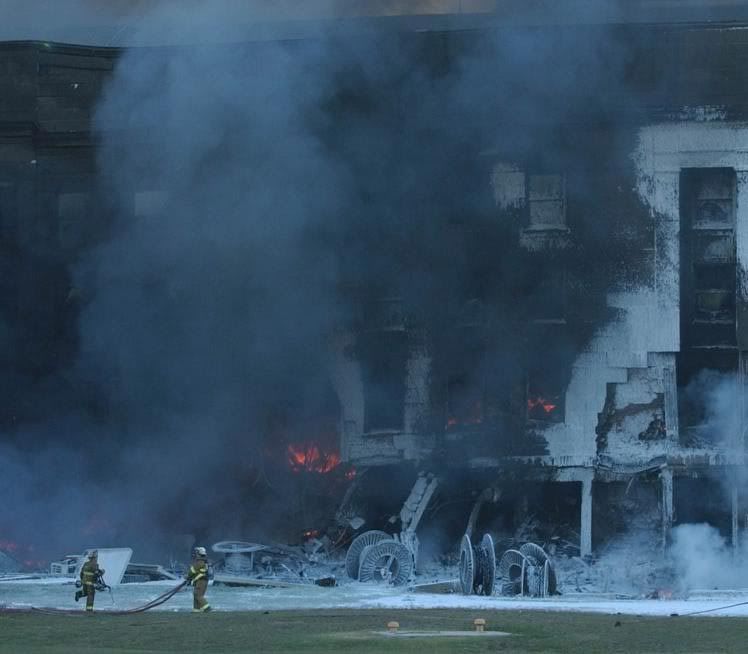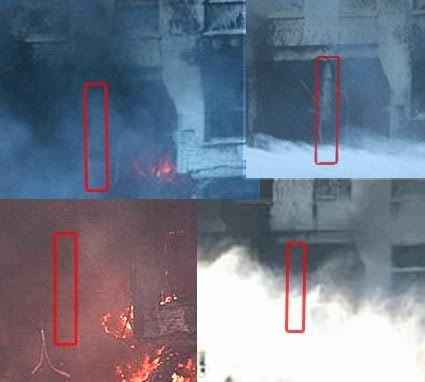The Frustrating Fraud
Last updated January 2 2008
This post is to organize the sub-posts dealing with the analysis of the physical evidence at the Pentagon attack scene. I am not a structural engineer, forensic scientist, or airplane mechanic. I'm a janitor, but have enough common sense, basic scientific knowledge, and ability to visualize spatial dynamics and physical processes to give my analysis some worth. Some of this is just conjecture, some backed by some research. And most importantly, I’m driven by a desire to actually figure out what makes the most sense, and not be ruled by mystery and speculation. Initially my research was to decide how far off-track Pentagon Strike and 911 In Plane Site really was, but since then I have put together a plausible explanation for what physically happened there that morning centered around the impact of a plane rougly the size and shape of a Boeing 757 and seemingly painted with the American Airlines standards. It's not the only possibility, but as I'll demonstrate it's probable, likely, or at at least as plausible as any other theory, putting the lie to the myriad claims it could not be so.
Just as I was posting this starting late in 2006, the new paradigm of no-757 hoaxing was emerging – Citizen Investigative Team and the witnesses whose geometry logically rules out an impact by a missile, drone, 757, anything, with all the points of evidence addressed below fabricated independently, some in real-time, to indicate a plane strike on the official path. To demonstrate how remarkably convoluted that would be all I need do is keep plugging away at the details like I have been and take as leads the points they think they can twist into making their silly case seem to make sense. To address the witness verification, logic, geometry, and honesty aspects of CIT, I’ve gone out on several limbs listed in a separate masterlist.
In piecing this together I’ve drawn on official and governmental sources, FOIA released documents shared by others, published personal accounts, and mostly on many hundreds of photographs and the published opinions of various theorists. I'm indebted in tiny part to 911 IPS/Loose Change/Hufschmid et al for getting me started and wondering, but indebted massively to the groundbreaking works of John Judge, Mark Robinowitz, Jim Hoffman, Russell Pickering, Joel van der Reijden, Scott Bingham, and various others for showing and addressing in a sane manner ALL the evidence available and thus allowing me closer to the reality of the situation. So in drawing on the works of others, there are only so many new ideas here. What I do is try to understand a point at the basic level, verify it by what I know or can learn, and then simplify and convey the core ideas in my own way. There are no math or science prerequisites for understanding the evidence of this crime scene as I've boiled it down.
In fact, as some have pointed out, the Pentagon may have become such a focus of flawed theories because of the simplicity of the crime scene. The WTC was almost volcanically destroyed and buried, but the Pentagon was basically a five-story office building left almost totally intact. The impacted section was primarily on a single floor of the building and of course inside the plane. Identification of plane parts and bodies would be easier by orders of magnitude than the New York crime scene. And if no such evidence existed, many reasoned, this would become the “weakest link” in the official story. The scant evidence available does not bear them out – this is someone’s weakest link, but not the government’s.
> ATTACK PATH DAMAGE AND QUESTIONS
- Precision Low-Rider: The remarkably anomolous final attack altitude - admittedly quite a feat for a hulking 757. And yet...
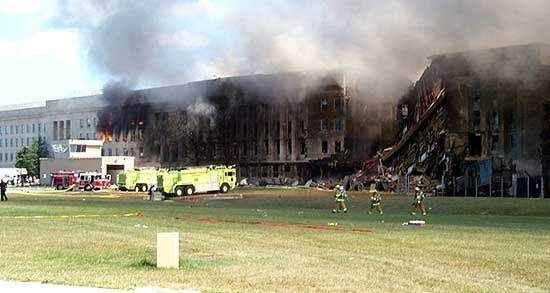 - The widely-cited unmarked lawn: A plane so low and yet not quite THAT low. Again suspicious but ultimately a red herring IMO. It seems that however unlikely, it flew that razor's edge of altitude, pushing the envelope to the maximum.
- The widely-cited unmarked lawn: A plane so low and yet not quite THAT low. Again suspicious but ultimately a red herring IMO. It seems that however unlikely, it flew that razor's edge of altitude, pushing the envelope to the maximum. - From the Blind Spot to the Empty Side: The lack of radar coverage over the attack route and the stroke of "luck" that had the plane hit the just-renovated and partly empty side of the building.
- The "undamaged" light poles: Testifying the 'official' flight path and altitude, were these clipped by the plane, popped with FX, or planted in advance?
- Analysis: Poles 1 and 2 proportions, shear height, clues to final plane bank, just a hint of getting into the Lloyd issue...
- Map of the crime Scene and the "obstacle Dodge." The heliport, attack path, generator, etc. mapped out and explained. Excellent resource to be updated soon to reflect the below.
- Vent Structure Damage: If the plane could be said to have hit the ground before impact, this is where it did so.
- Twisted Orange Trailers: Analysis of scrap metal at the scene with some angles and stuff. Pretty cool.
- Cookie Identification Team: The damage points that line up so well they're called 'cookie-cutter,' or too perfect, by critics. Generator trailer, fencem vent retaining wall, tree damage, general impact hole.
- Like Two Bulldozers: A new view highlights the consistency of the damage path with a 757 strike or some damn good fakery.
> IMPACT DAMAGE

- The Entry Wounds: Analyzing the tiny "16-foot hole" so many insist could not have allowed a 757. It's actually 90 feet wide.
- The "16-foot hole challenge." coming soon.
- The outer wall: how many inches of what?: External Wall construction notes - 18" of steel-reinforced concrete? 13" of brick reinforced limestone? Or what?
- Support columns Masterlist: The "intact support columns" thought to preclude a 757 - anlysis with thee linked sub-posts demonstrating incorrect official reports, questioning the status of columns 15-17aa, and the PentaCon guys' analysis of "intact" column 14aa on the second floor.
- Pentagon Foundation Damage?
- Right Wing Damage Continuity
> DEPTH OF PENETRATION
- Early revisionist accounts decided only one ring was damaged. I run rings around their deeply flawed analyses (from 2001 and 2002) for no big plane at the Pentagon. They should have learned by now, but it doesn't seem they have.
- Nine feet of Steel Reinforced Idiocy: Plane penetrates 300 feet, fraud logic penetrates nothing.
- Punch-Out Page - intro on the punch-out hole at the end of the plane's alleged penetration, masterlist of more posts on the hole.
> FIRE:
- No fires? "A Stool Sample of IPS Evidence."
- Impact fireball: Fireball Fakery: Challenge to CIT
> THE PLANE PARTS:
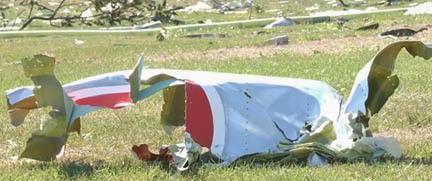
- Part I: The Engines: Parts that could be from almost any engine - including a 757's.
- Part II: Landing Gear: a wheel and a landing gear that look like those from a 757.
- Part III: the Scrap Over the Scraps: Fuselage segments from an American Airlines jet.
- The Flight Data Recorder {masterlist}: Found intact, with altitude, speed, etc details programmed in, and coming out weird. A lot to cover... especially the animation.
>THE BODIES:
- Faces of Death, the Moussaoui Edition: The government's release of new evidence in mid-2006 as the Moussaoui case closes - are we seeing the Flight 77 victims here?
- also covered at the end of the nine feet of idiocy piece.





















